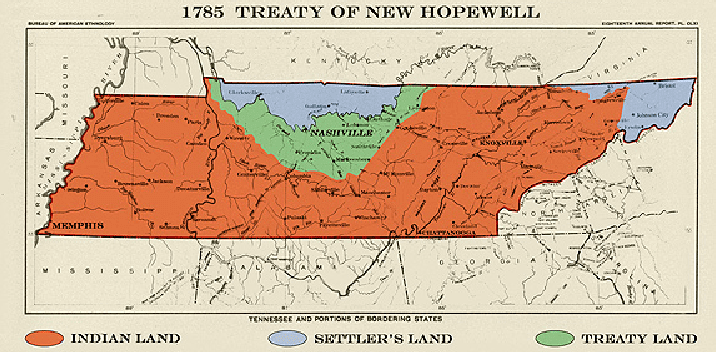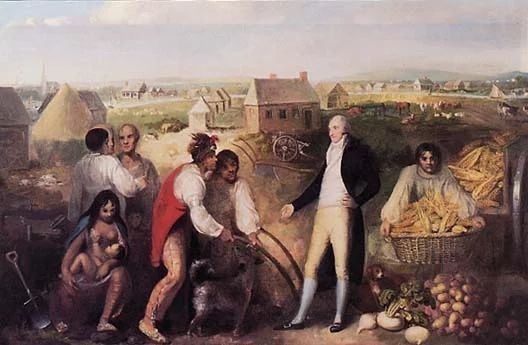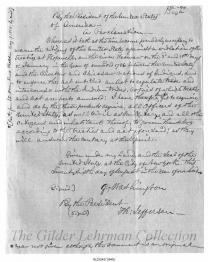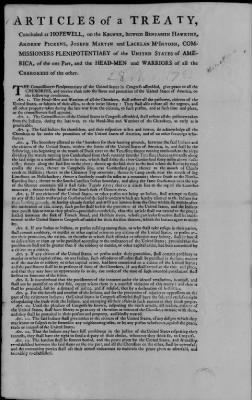Cherokee almanac treaty of hopewell
The Treaty of Hopewell is any of three different treaties signed at Hopewell Plantation. The plantation was owned by Andrew Pickens, and was located on the Seneca River in northwestern South Carolina. The treaties were signed between the Confederation Congress of the United States of America and the Cherokee (1785), Choctaw and Chickasaw (1786) peoples. The historic site of the 'Treaty Oak', where the signings took place, is on Old Cherry Road in Pickens County, South Carolina. There is a historical marker placed near the bridge crossing Lake Hartwell, and a trail through the forest that allows access to the monument. The actual Treaty Oak is no longer alive.
Contents
- Cherokee almanac treaty of hopewell
- 1785
- Cherokees
- Cherokee treaty terms
- Choctaws
- Choctaw treaty terms
- Chickasaws
- Chickasaw treaty terms
- References

1785
On November 28, 1785, the first Treaty of Hopewell was signed between the U.S. representative Benjamin Hawkins and the Cherokee Indians. The treaty laid out a western boundary for American settlement. The treaty gave rise to the sardonic Cherokee phrase of Talking Leaves, since they claimed that when the treaties no longer suited the Americans, they would blow away like talking leaves. A description of the boundary is found on Article 4 of the accord:
Included in the signatures of the Cherokee delegation were several from leaders of the Chickamauga/Lower Cherokee, including two from the town of Chickamauga itself and one from Lookout Mountain Town.
The Cherokee complained at the treaty that some 3,000 white settlers of the de facto State of Franklin were already squatting on the Cherokee side of the agreed line, between the Holston and French Broad Rivers, and they continued to dispute that region until a new border was defined by the 1791 Treaty of Holston.
Cherokees

On November 28, 1785, the first Treaty of Hopewell was signed between U.S. representatives Benjamin Hawkins, Andrew Pickens, and Joseph Martin and members of the Cherokee People.
Cherokee treaty terms
The preamble begins with,
The following lists the terms of the treaty:

1. Indians to restore prisoners (who are U.S. citizens or their allies), slaves, and property.
2. Cherokees acknowledge protection provided by the United States.
3. Boundaries defined.
4. No citizen of United States shall settle on Indian lands and Indians may punish violators as they please.
5. Indians to deliver criminals who commit robbery, murder, or capital crimes.
6. Citizens of United States committing crimes against Indians to be punished.
7. Retaliation restrained.
8. United States to regulate trade.
9. Special provision for trade.
10. Cherokees to give notice of any known designs against United States by tribes or any person.
11. Peace and friendship perpetual.
Choctaws

On January 3, 1786, the Treaty of Hopewell was signed between U.S. representatives Benjamin Hawkins, Andrew Pickens, and Joseph Martin and members of the Choctaw People.
Choctaw treaty terms
The preamble begins with,
The following lists the terms of the treaty:
1. Indians to restore prisoners (who are U.S. citizens or their allies), slaves, and property.
2. Choctaws acknowledge protection provided by the United States.
3. Boundaries defined.
4. No citizen of United States shall settle on Indian lands and Indians may punish violators as they please.
5. Indians to deliver criminals who commit robbery, murder, or capital crimes.
6. Citizens of United States committing crimes against Indians to be punished.
7. Retaliation restrained.
8. United States to regulate trade.
9. Special provision for trade.
10. Choctaws to give notice of any known designs against United States by tribes or any person.
11. Peace and friendship perpetual.
Chickasaws
On January 10, 1786, the Treaty of Hopewell was signed between U.S. representatives Benjamin Hawkins, Andrew Pickens, and Joseph Martin and the Chickasaw.
Chickasaw treaty terms
The preamble begins with,
The following lists the terms of the treaty:
1. Indians to restore prisoners, slaves, and property.
2. Acknowledge the protection of United States.
3. Boundaries defined.
4. No citizen of United States shall settle on Indian lands and Chickasaws may punish them as they please.
5. Indians to deliver up criminals.
6. Citizens of United States committing crimes against Indians to be punished.
7. Retaliation restrained.
8. United States to regulate trade.
9. Special provision for trade
10. Indians to give notice of any known designs against United States.
11. Peace and friendship perpetual.
